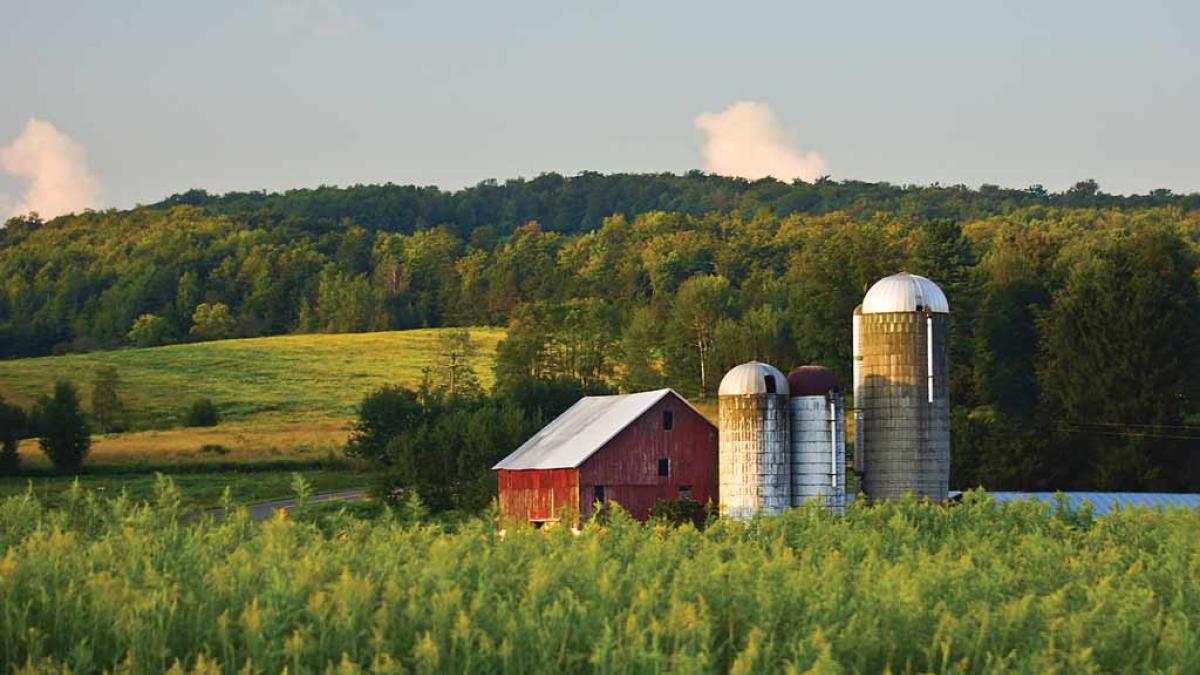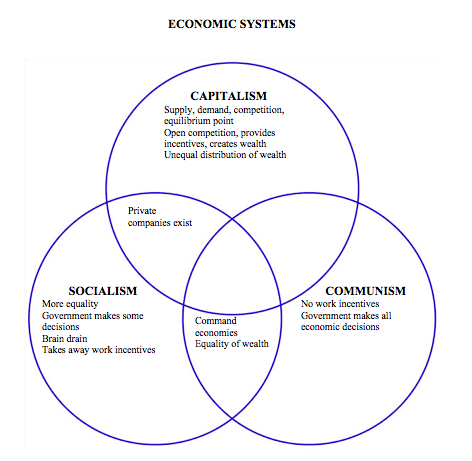2.4 | Capitalism, Socialism, and Communism: Economic Systems in Agriculture
Economic Systems in Agriculture
Anthony Farao
Introduction
Understanding the foundational economic systems that shape global markets is essential for anyone entering the agricultural business field. Whether you’re exporting almonds from California, managing a cooperative dairy in Wisconsin, or navigating trade agreements, the economic principles behind capitalism, socialism, and communism directly affect your work. This chapter explores how each system allocates resources, determines production, and governs the role of government—all within the lens of agricultural business.
Learning Objectives
By the end of this chapter, you will be able to:
- Define capitalism, socialism, and communism in economic terms.
- Explain how each system impacts agricultural production, ownership, and trade.
- Compare the advantages and disadvantages of each system for agriculture.
- Analyze real-world examples of how these systems function in modern agriculture.
1. Capitalism and Agricultural Markets
Capitalism is an economic system where private individuals or companies own the means of production. Decisions about what to produce, how to produce, and for whom are driven by the forces of supply and demand in a free-market environment.
Key Characteristics in Agriculture:
- Private ownership of land and resources: Farms, equipment, and seed patents are owned by individuals or corporations.
- Profit-driven decisions: Agricultural production responds to market signals. For example, high almond prices may drive more farmers to plant almond orchards in California.
- Innovation and efficiency: In a capitalist system, competition encourages technological innovation, such as GPS-guided tractors or gene-edited crops.

2. Socialism and Agricultural Equity
Socialism prioritizes state or collective ownership of resources and emphasizes equal distribution of wealth. In a socialist agricultural model, key industries—such as grain production or irrigation systems—may be state-managed or regulated to ensure access for all.
Key Characteristics in Agriculture:
- Government price controls and subsidies: These prevent extreme price swings and ensure food affordability.
- Land reform and redistribution: In many socialist economies, land has been redistributed from large landowners to small farmers or collectives.
- Focus on social equity: Systems aim to prevent monopolies and ensure access to agricultural inputs (seed, fertilizer, water).
🔍 Case Study Tip:
Explore Cuba’s nationalized agricultural programs or Vietnam’s socialist-to-market reforms post-1986 to see how socialist models adapt to food system demands.

3. Communism and Collective Agriculture
Communism seeks a classless society in which all property is communally owned. There is no private land ownership, and central planners determine what to produce and in what quantities.
Historical Impact on Agriculture:
- Collectivization: Under regimes like Stalin’s USSR or Mao’s China, land and equipment were consolidated into massive state-run farms.
- Lack of market signals: Without prices to guide supply and demand, overproduction or shortages were common.
- Food insecurity: In many cases, rigid central planning failed to meet agricultural demands, contributing to widespread famine (e.g., the Great Leap Forward in China).

4. Mixed Economies: Agriculture in the Real World
Most countries today operate as mixed economies, combining elements of both capitalism and socialism. In the United States, for example, agriculture is privately owned but heavily influenced by:
- USDA regulations
- Subsidy programs (e.g., crop insurance, disaster relief)
- Public research and extension services
In contrast, countries like Denmark or Canada balance market-driven farming with stronger environmental and social protections.
📊 Modern Ag Example:
In California, almond growers operate in a capitalist model, but water access and environmental regulations create socialist-style constraints on production.
Proposed Water Rules Raise Concerns for California Agriculture

Key Takeaways
- Capitalism encourages innovation and efficiency but can lead to inequality in rural areas without regulation.
- Socialism promotes fairness and resource access but may limit market dynamism.
- Communism offers a radical vision of shared wealth, but historical implementations have struggled with agricultural productivity.
- Most countries today operate in a blended economic model.
Interactive Reflection: Which System Shapes Your Food?
Think about where your food comes from. Does it come from a large U.S. agribusiness? A global fair-trade collective? A government-subsidized rural co-op? Understanding the economic system that supports your food supply is key to becoming a thoughtful ag business professional.
Exercises
📝 Journal Prompt:
Reflect on how government involvement (or lack thereof) has influenced a recent food-related issue (e.g., egg prices, drought relief, trade embargoes). Which economic system was most visible in this example?
- Document Link: “Capitalism, Socialism, Communism and Mixed Economies” PowerPoint (Canvas)
- Reading Assignment: “Capitalism vs. Socialism – What’s the Difference?” – Investopedia
Media Attributions
- TEXT

